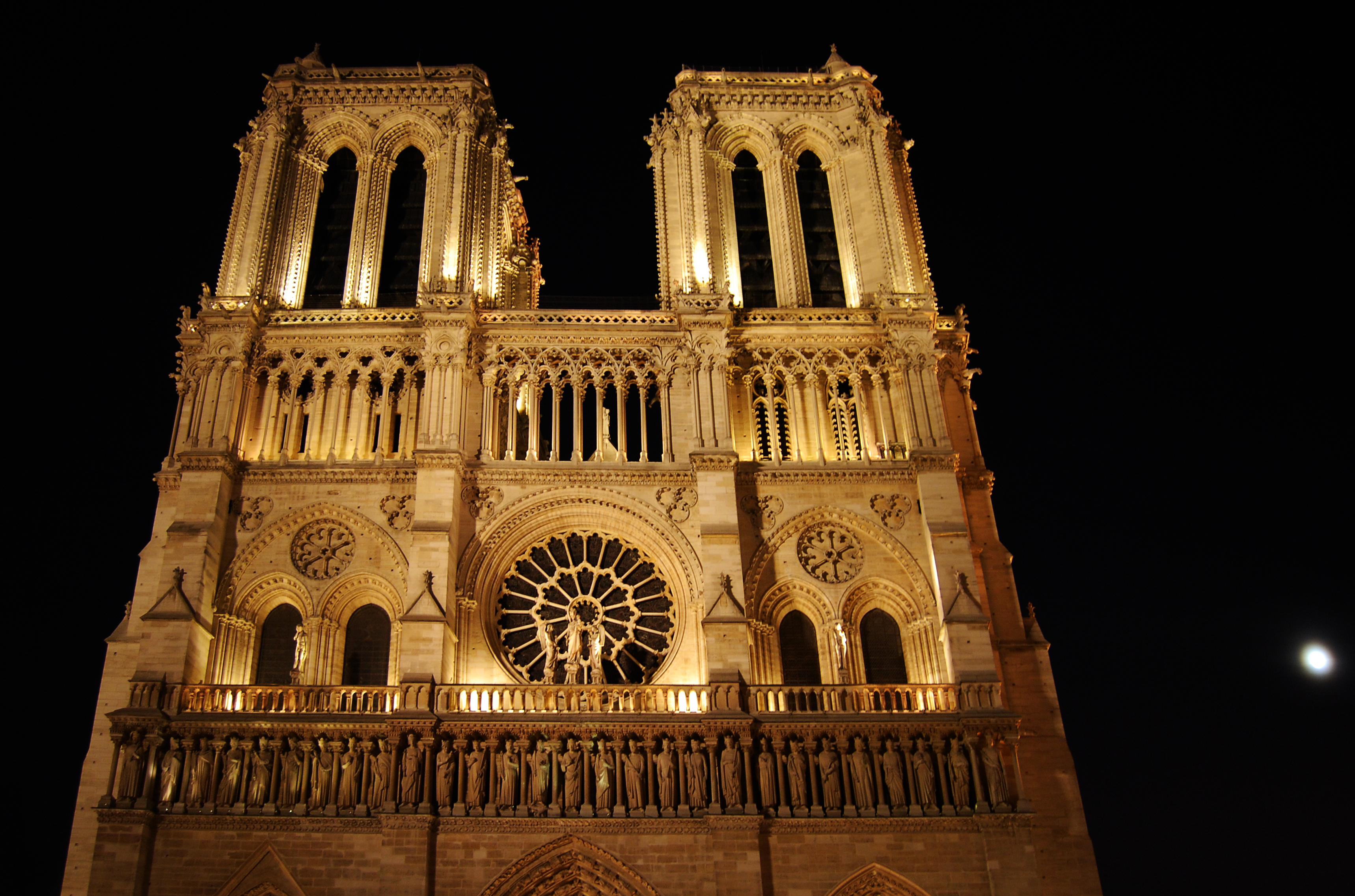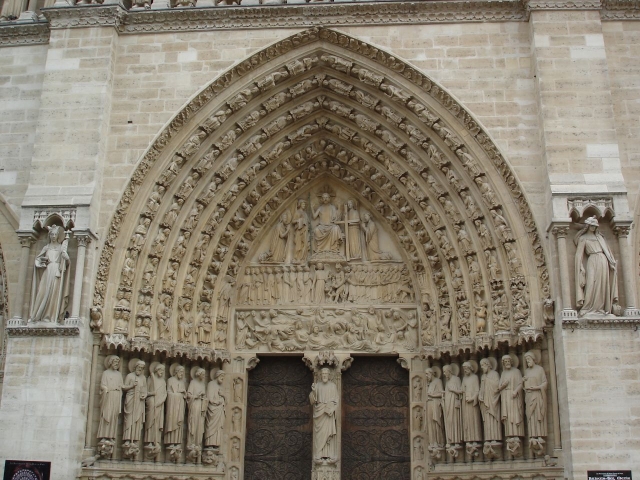The architecture of the Gothic style involved pointed arches, similar to the Islamic styled arches. These arches have a point at the top center of the arch which gives it a more narrow, taller appearance. Suger's Remodeling of St. Denis also affected the architecture of the Gothic period, in that he believed that the most expensive materials were appropriate for the buildings that housed the ritual of celebrating masses. This use of nicer materials was copied and hence began the movement of building churches throughout France.
Churches:
Because so much detail was put into the Romanesque and Gothic churches, it took hundreds of years of building and rebuilding to complete the structures. That is why a lot of Romanesque churches actually have Gothic additions, since the periods style changed within the building process. Notre Dame is one of the most famous of the Churches that were built during this time in France due to its amount of detail as well as its location on an island sitting in the middle of Paris.

Portals:
Unlike the Romanesque churches were entryways were ornamented with torture and evil scenarios, the Gothic and more on the positive side of religion ("Come, enter through these doors. Heavenly salvation awaits"); since the murals' and carvings' purpose was to tell stories to the illiterate.

Flying Buttress:
The buttress, in its simplest form, was used to prop up a leaning wall. Eventually, architects started putting in the buttress from the start. This is called separating the wall from the structure and allowed for the stained glass walls to remain without the structure collapsing.

Modern Day Gothic:



No comments:
Post a Comment